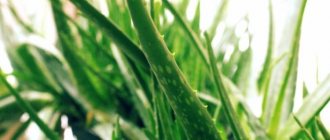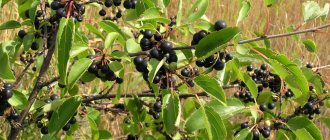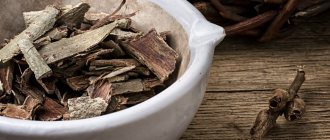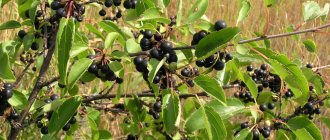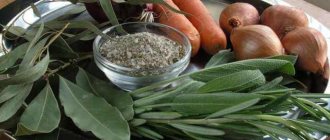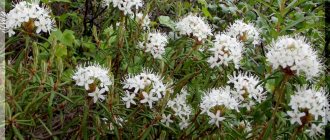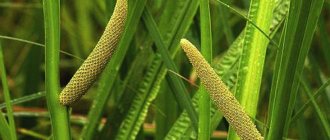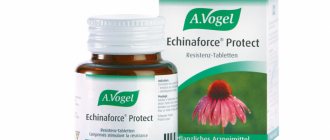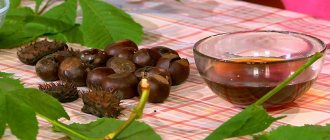Home ⁄ Periodontology (old page)
[113909]
Periodontology is a branch of dentistry that deals with the diagnosis, prevention and treatment of gums. The most common diseases encountered in periodontology are gingivitis, periodontitis, and periodontal disease. We recommend that you carefully care for your teeth and gums, and also undergo regular examinations by a periodontist. Don't delay visiting your doctor if you notice your gums bleeding when biting into hard foods or brushing your teeth. Any disease, including gum disease, is much easier to cure in the initial stage than when it is advanced.
Medicinal properties
Oak is a very common plant. It can easily be found in mixed forests and parks. Sometimes it grows in continuous massifs. The oak bark is marked with deep cracks and has a dark brown or dark gray color. For medicinal use, the bark is collected from young branches with a diameter of no more than 10 cm. It should be thin, with a smooth surface.
In addition to the high content of tannins, oak bark contains many other biologically active elements that provide the plant with medicinal properties. These are flavonoids, pectin, pentosans, ellagic and gallic acids, mucus, sugars, and protein compounds.
Botanical characteristics
The common oak is a long-lived monoecious plant: its average age is 300–400 years. The tree grows up to 50 m high, has an irregular, very extensive crown and a powerful root system.
The oak has a large trunk with a diameter of up to 2 m. However, there is a known case when the circumference reached 13 m.
Oak leaves are simple, petiolate, shiny; leaf arrangement is spiral. The flowers are dioecious: staminate in catkins and sessile pistillate. Oak fruits are acorns: ovoid, brownish-yellow nuts with a diameter of 1–1.5 cm.
Flowering appears in April-May. Fruits appear on the tree in autumn, in September-October.
Effects of oak bark on the body
Tannins, tannin and some others, interacting with proteins, precipitate them. As a result, a protein film is formed that performs a protective function. It protects tissues from external irritants, which helps reduce inflammation and start the healing process.
Tannin, entering the intercellular fluid, precipitates not only proteins, but also mediators of nerve endings. This weakens the power of perception of the sensory nerves, interferes with the transmission of nerve impulses and acts like local anesthetics.
Due to the interaction of plant astringents with proteins, they are used as anti-inflammatory agents for the healing of external wounds, mucous membranes, and ulcers. In addition, it is used internally for intestinal inflammation, as well as to provide antimicrobial, antifermentation and antiputrefactive therapy.
Contraindications
Overuse of oak bark can lead to nausea, vomiting, diarrhea, gastric and intestinal bleeding, and other digestive disorders. Rinsing the mouth for a long time often leads to darkening of tooth enamel and partial loss of smell.
The use of oak bark is limited in childhood. It is not advisable to even use the drug externally until two years of age. This should be done in exceptional cases when there is nothing else to treat the child. In older children, only external use is allowed, and only as prescribed by a doctor. Oak bark is not used as an internal remedy for the treatment of pregnant women, as well as patients with certain intestinal disorders, such as hemorrhoids and constipation.
The drug is very often used to eliminate diarrhea. However, it should be remembered that more complex and serious diseases can manifest themselves as similar symptoms.
If diarrhea does not stop for a long time, is accompanied by nausea and pain in the head, abdomen, feces have a greenish tint, contain mucus, blood, urgent medical attention is needed. In this case, the use of oak bark will only aggravate the situation and entail a loss of time and chances of recovery.
How to brew
Pour one tablespoon of crushed bark into half a liter of water.
Bring to a boil and reduce heat to low, simmer for 15-20 minutes.
We recommend reading: Description of the Veselka mushroom, medicinal properties and contraindications
Add the boiled amount of water, restoring the original volume of liquid.
Use the resulting decoction for gargling, mouthwash, irrigation for cervical erosions and colpitis, in the form of lotions for the treatment of burns, bedsores, and eczema.
Infusion
Pour one tablespoon of dried oak bark with a cup of boiling water. Let it brew for at least an hour. Filter the resulting solution to remove impurities. In some cases, the use of an alcohol tincture of the bark is more justified. It is prepared as follows.
Grind the bark to a powder. Pour a teaspoon of raw material into 0.4 liters of vodka (moonshine). You need to insist for at least a week, so you need to take care of preparing the medicine in advance. The drug, like most herbal remedies, should be taken on an empty stomach.
Application of oak bark
Oak bark can help effectively cope with many diseases. However, we must remember that the correct dosage of the drug is of great importance.
If infusions (decoctions) of oak bark are used incorrectly, you can get new diseases and problems instead of health.
For toothache
A decoction of oak bark in some cases will help relieve toothache. To do this, you need to grind two tablespoons of raw materials in a coffee grinder. Then pour a cup of water over everything and boil lightly for about a quarter of an hour. Add the same amount of sage to the broth. Infuse, then strain everything. Instead of sage, you can add alum.
Rinse the aching tooth as often as possible, at least 5-6 times during the day. Soon the pain will lessen. You should consult a doctor as soon as possible.
For sore throat
Sore throat is a rather dangerous disease caused by a bacterial infection. Therefore, it must be treated with the participation of a doctor. A decoction of the bark will help alleviate the disease. It is used to gargle a sore throat. As mentioned earlier, the drug has strong anti-inflammatory and antimicrobial properties. Prepare a decoction of oak bark (see above) and rinse every two hours.
For colds
For colds, it is better to use an alcohol extract of oak bark (see recipe above). The frequency of administration is two to three times a day.
The tincture prepared in this way can be stored for more than a year. Therefore, you can prepare it for future use.
If you have a runny nose, you can put infusion of the bark in your nose. This treatment is also suitable for children. The nasal passages are washed with infusion of the bark before administering the main medicine.
It's very easy to prepare. Brew a teaspoon of bark with a glass of water. Let it brew a little. Strain, cool, and only then begin to treat a runny nose.
For sweaty feet and armpits
Traditional medicine for excessive sweating offers this method of treatment. Take some oak bark and grind it almost into powder. Pour into socks and put them on. And repeat this every day until the result appears. Socks should be changed daily and always be freshly washed, ironed on the inside, and only made of cotton.
Mix oak bark with serpentine rhizomes and measure out two teaspoons of the resulting mixture. Pour half a liter of boiling water and boil for five minutes. Cool to a tolerable temperature and make foot baths from the broth. This is another way to combat acrohidrosis.
To reduce armpit sweating, you can use this recipe. Brew a teaspoon of raw material with a cup of water and leave. Add the juice of one lemon to the strained infusion. Wipe sweaty areas up to five times a day. An additional bonus is the pleasant lemon scent emanating from the body.
We recommend reading: Baikal skullcap - medicinal properties and contraindications
For hemorrhoids
To treat hemorrhoidal cones, you can prepare the following ointment. Boil 40 grams of powdered oak bark in 200 ml of water over low heat until the solution thickens and the water evaporates. Mix with 50 grams of butter and the resulting ointment to lubricate sore spots.
In 1 liter of water, cut the collected young oak bark into small pieces. Cook for ten minutes. When the liquid cools, strain. Do enemas three times a day; during the procedure, lie face down and remain in this position for 15 minutes.
For skin diseases in adults and children
Treatment of trophic ulcers. Dig up the horseradish along with the leaves and rinse. Add oak bark. Pour water and boil for half an hour. Leave and cool by half. Soak your wounds in a warm broth. The liquid can be used more than once.
Recipe for foot fungus. You cannot buy this product at the pharmacy. You need to go into the forest yourself and scrape off the green residue from the oak bark. Dry it and grind it into powder. Then wash the sore feet in a solution of salt and water (1:1), wipe dry. Sprinkle green powder between your fingers and put on socks.
To rid young children of diathesis, the most effective are baths prepared from a decoction of oak bark. Add 100 grams of raw material per liter of boiling water, boil for about twenty minutes, strain and pour into a bath of warm water. Place your child there and make sure that the water does not cool down too much. Repeat the procedures for seven days and everything will pass.
Oak bark for acne and inflammation
You can prepare an anti-acne lotion. Boil four tablespoons of oak bark in a liter of water for no more than five minutes.
Cool, filter out impurities, add lemon juice and a spoonful of alcohol to the solution. Keep the resulting product in a dark container in the refrigerator.
Cleanse your face twice a day. After the lotion is absorbed, wash your face with water. This procedure tones the skin, relieves inflammation, and fights acne.
Oak bark for men
To treat prostate adenoma, it is useful to use sitz baths prepared from chamomile and oak bark. Both ingredients must be taken in equal quantities and mixed. Brew 50 grams of the mixture with 3 liters of boiling water and leave. Pour into the bath and sit in it at a temperature of at least 38 degrees for twenty minutes. Repeat every other day for a month.
To increase potency in men, you need to brew 20 grams of bark with a liter of boiling water. Leave in a water bath for about forty minutes, then strain the sediment. Drink two glasses a day, morning and evening.
Oak bark for women
The easiest way to treat thrush is to soak a cotton (gauze) swab in the bark infusion and lubricate the affected areas with it. For douching, boil the raw material (2 tablespoons) in one liter of water for at least a quarter of an hour, cool and inject inside in small portions. The main thing is not to overdo it, so as not to harm the beneficial microflora.
For cervical erosion, douching is also performed, the frequency of which reaches up to four times a day. The course lasts no more than two weeks. The procedure cannot be performed during menstruation. Treatment is best carried out with the consent of the doctor. Oak bark gives the following effect:
- fights microbes, fungi;
- restores damaged mucous membranes;
- prevents infection from spreading inside;
- creates an analgesic effect;
- accelerates healing.
We recommend reading: Medicinal properties, uses and contraindications of orchis
For douching for uterine polyps, you can use the following recipe. Take equal parts of sage, rosemary and yarrow (2 tablespoons each), as well as oak bark. Mix everything and boil for half an hour over low heat in three liters of water. Strain the sediment and douche.
Oak bark for diarrhea
Preparations based on oak bark are very often used for intestinal disorders accompanied by diarrhea.
The drug promotes the death of pathogenic microflora, soothes the irritated mucous membrane of the digestive tract, and has an anti-inflammatory effect.
The sugars, mucus, and fatty oils contained in the bark decoction relieve tissue irritation. Pectins and proteins bind and remove pathogenic microflora and toxins produced by it, that is, they act as enterosorbents. Tannins prevent the proliferation of pathogenic microorganisms. Pentosans neutralize the liquid environment in the intestines.
To prepare an infusion for the treatment of diarrhea, you need to use bark harvested from young oak branches. Grind it into powder. Infuse a teaspoon of raw material overnight in 400 ml of chilled boiled water. Drink 3 tablespoons four times a day.
Description
Oak is a genus of the Beech family. It unites about 600 species. The natural habitat of oak is regions of the Northern Hemisphere with temperate and tropical climates.
The type species of the Oak genus is the common oak. This tree is long-lived. The average age of an oak is 300–400 years. At the age of 100–200 years, it stops growing in height, and grows in width almost all its life. There is a known case when its trunk circumference reached 13 m.
Young oak trees are characterized by high shade tolerance. The older the oak, the more light-loving it is. This tree is demanding on soils, prefers rich and fertile ones, and does not tolerate waterlogging. At the same time, it can develop on dry and saline soils. Oak is also characterized by heat and drought resistance.
Oak has always been respected. Even the epithets for him were chosen appropriately: mighty, majestic. Maybe that's why it is associated with longevity and good health. However, the tree is revered not only for its external beauty. Oak has many beneficial properties that are still used today in the fight against various diseases. Acorns and leaves are in demand in treatment. But the bark is of greatest value, and by studying the medicinal properties and contraindications of oak bark, you can prepare a remedy for many diseases.
The use of oak bark in medical practice is due to its high content of tannins. Thanks to its rich composition, the drug has a strong anti-inflammatory and astringent effect.
It is prescribed for chronic and acute enterocolitis, accompanied by diarrhea, various bleeding, as well as in many other cases.
It is because of its strength and longevity that the oak tree has good positive energy. It is believed that if you take a walk in the forest where this tree grows, a person will be “charged” with this energy and will feel calm and peaceful. For the best effect, you can clasp the oak tree with your hands, close your eyes and listen to the rustle of its leaves. It has been proven that if you do this procedure every day you can get rid of deep depression.
Oak bark is officially included in the list of medicinal products as an effective antiseptic and astringent. Most often, a decoction of the bark is used to relieve diarrhea. However, this is not the only pathology in which oak raw materials will be beneficial. The healing power of this mighty tree will help cope with gynecological diseases, improve the health of the male body, relieve dental problems, and improve digestion. And this is not the entire list of pathologies for which oak bark helps.
Oak bark for hair
There is more than one recipe for beauty and health in which oak bark is the main component. The simplest use of this product is to use the decoction to rinse your hair every time after washing your hair.
In this simple way, you can not only strengthen the hair follicles, but also add fullness to your hair, simultaneously giving it a pleasant dark shade. At the same time, eliminate dandruff. Hair coloring will be more successful if, in addition to the main ingredient, you add ground coffee beans to the broth.
Oak bark for gums
You can eliminate various problems in the oral cavity without going to the dentist. A decoction of oak bark helps relieve gums from bleeding and strengthen them. To do this, you can use the following treatment option.
You need to buy at the pharmacy or prepare yourself two ingredients to prepare the medicine:
- oak bark - 2 tbsp. l.;
- linden color - 1 tbsp. l.
Mix it all. Separate one tablespoon of herb from the resulting mixture, pour a cup of boiling water over it and boil for several minutes. Strain the solution while still hot, then cool. Rinse your mouth with the decoction every two hours throughout the day.
Features of collection
Work on harvesting oak bark is carried out in early spring, during sap flow, which makes it easy to separate the bark. To do this, semi-circular cuts are made at a distance of 30 cm from each other, additional cuts are made along the fibers - and the bark is easily separated in the form of grooves or tubes.
The thickness of oak bark should be no more than 6 mm. Raw materials that are cracked or contaminated with lichen cannot be collected.
Drying and storage conditions
Dry the collected bark under a canopy or in well-ventilated attics, spreading it in a thin layer on paper or cloth and turning it over daily. When drying in air, raw materials must be protected from rain, otherwise when moistened, they lose tannins and become unusable. Dry bark must contain at least 8% tannins and no more than 15% moisture. When bent it should break with a bang.
The dried raw materials are tied into bundles. Stored in bags. Oak bark remains usable for five years.
Oak bark during pregnancy
During the period of bearing a child, it is extremely undesirable to take drugs made from the bark orally. If such a need arises, it is necessary to consult your doctor on this issue. And only with his approval begin to use this product.
A decoction of the bark is used for douching for thrush. This disease is a very common visitor to pregnant women. A doctor may well prescribe a decoction of the bark for external use in pregnant women, including for diseases of the oral cavity, for example, periodontal disease and others. The decoction is also used in the treatment of hemorrhoids, which also often occurs in women during pregnancy.
In an “interesting” situation, women do not stop monitoring their appearance. A decoction of the bark will be much safer for hair coloring than industrial chemical dye.
Source
Indications for use
Oak bark is used for various pathologies. The main list of indications is as follows:
- Diseases of the digestive tract.
- Bleeding.
- Dermatological diseases.
- Dental pathologies.
- Women's and men's diseases.
- Disorders of the reproductive system.
- Vascular pathologies.
- Respiratory diseases.
- Diseases of the urinary system.
In addition to medical indications, there are also cosmetic reasons. Products based on oak bark do an excellent job of treating hair.
Products based on oak bark help get rid of dandruff, strengthen hair follicles, and eliminate oily scalp.
